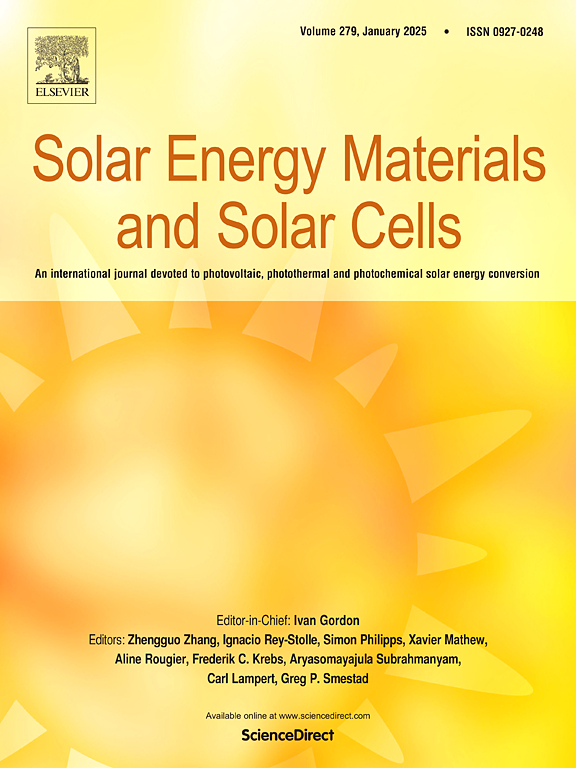Thermal performance enhancement of ceramics based thermal energy storage composites containing inorganic salt/metallic micro-encapsulated phase change material
IF 6.3
2区 材料科学
Q2 ENERGY & FUELS
引用次数: 0
Abstract
To simultaneously enhance the latent heat storage density per unit volume and thermal conductivity of inorganic salt/ceramic composites, metallic microencapsulated phase change materials (MEPCMs) that match the phase change temperature of inorganic salts were incorporated into them. In addition, industrial graphene, carbon fiber, and Sn were strategically introduced as thermal conductivity enhancers, while SiO2 nanoparticles were utilized to optimize the specific heat capacity. The experiment results reveal that the most pronounced improvement in thermal conductivity was achieved through the synergistic effect of industrial graphene and Sn. Notably, the composite attained a thermal conductivity of 2.17 W m−1 K−1, marking a significant 128.4 % increase, when 3 wt% industrial graphene and 2 wt% Sn were incorporated. Meanwhile, the specific heat capacity was effectively enhanced by 8.9 % with the addition of 1 wt% SiO2 nanoparticles into the inorganic salt matrix. The simultaneous enhancement of both thermal conductivity and specific heat capacity underscores the innovation of this composite design, as it overcomes the conventional trade-off between these properties. The optimized combination of 3 wt% industrial graphene, 2 wt% Sn, and 1 wt% SiO2 nanoparticles establishes a synergistic thermal performance improvement, paving the way for next-generation high-efficiency thermal energy storage materials.

含无机盐/金属微囊化相变材料的陶瓷基储能复合材料热性能增强研究
为了同时提高无机盐/陶瓷复合材料的单位体积潜热储存密度和导热系数,在无机盐/陶瓷复合材料中加入与无机盐相变温度相匹配的金属微胶囊化相变材料(MEPCMs)。此外,工业石墨烯、碳纤维和锡被战略性地引入作为导热增强剂,而SiO2纳米颗粒被用于优化比热容。实验结果表明,通过工业石墨烯和锡的协同作用,获得了最显著的导热性改善。值得注意的是,当加入3 wt%工业石墨烯和2 wt%锡时,复合材料的导热系数达到2.17 W m−1 K−1,显著提高了128.4%。同时,在无机盐基体中添加1 wt%的SiO2纳米颗粒可有效提高8.9%的比热容。热导率和比热容的同时增强强调了这种复合材料设计的创新,因为它克服了这些性能之间的传统权衡。3wt %工业石墨烯、2wt %锡和1wt % SiO2纳米颗粒的优化组合建立了协同热性能改善,为下一代高效热能储存材料铺平了道路。
本文章由计算机程序翻译,如有差异,请以英文原文为准。
求助全文
约1分钟内获得全文
求助全文
来源期刊

Solar Energy Materials and Solar Cells
工程技术-材料科学:综合
CiteScore
12.60
自引率
11.60%
发文量
513
审稿时长
47 days
期刊介绍:
Solar Energy Materials & Solar Cells is intended as a vehicle for the dissemination of research results on materials science and technology related to photovoltaic, photothermal and photoelectrochemical solar energy conversion. Materials science is taken in the broadest possible sense and encompasses physics, chemistry, optics, materials fabrication and analysis for all types of materials.
 求助内容:
求助内容: 应助结果提醒方式:
应助结果提醒方式:


